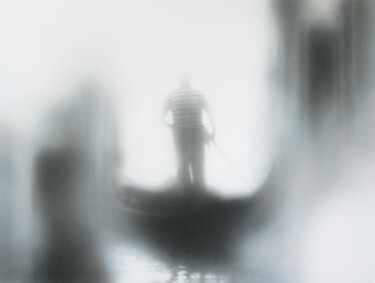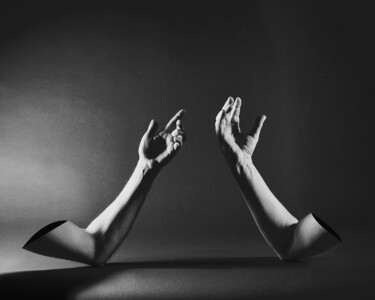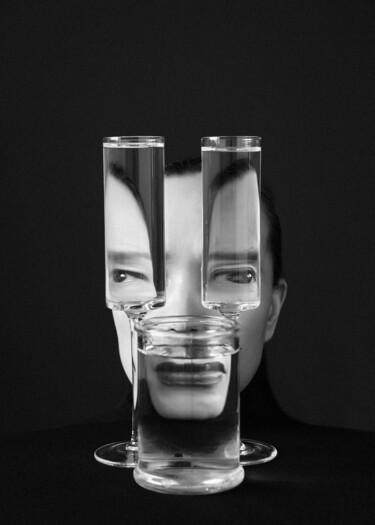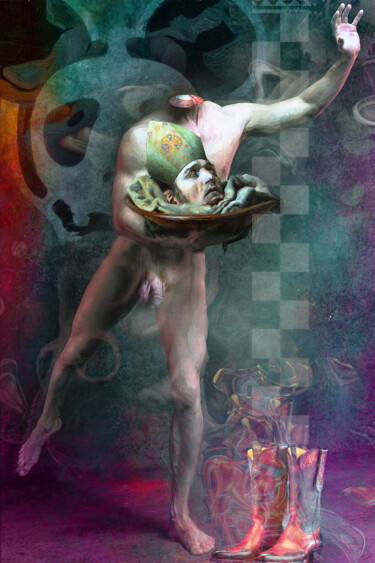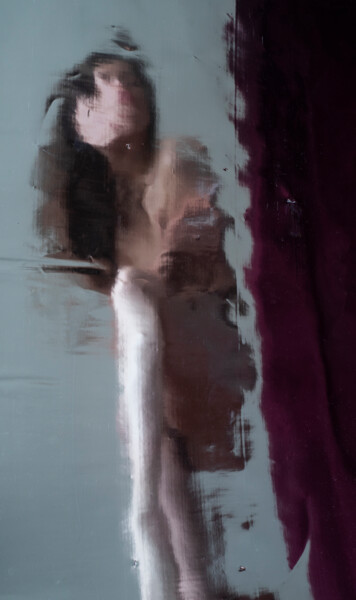I found myself struggling with what to write to scare you this Halloween, given that it seems everything has already been said about frightening and unsettling works of art. Every ranking and art history volume has thoroughly analyzed the most terrifying paintings, exploring every dark aspect. So, I decided to change course, shifting the focus not on the works themselves, but on the lives of the artists who conceived them. Thus, I’ve created a Top 10 list of the most disturbing and controversial biographies in art history. In fact, the troubled lives of painters, marked by debated behavior, dramatic events, and personal struggles, can be just as unsettling as the masterpieces they created. These life stories, filled with tension and torment, reveal the shadow that fueled the creative genius behind each painting, which continues to profoundly disturb us today.
We’ll begin this dark journey by exploring the lives of some of the most renowned and "terrifying" names in Western art history: Caravaggio, master of chiaroscuro and known for his violent life; Francisco Goya, who translated his inner nightmare into the Black Paintings; Edvard Munch, whose anxiety and despair are reflected in his iconic works; Hieronymus Bosch, who left us with surreal and unsettling worlds populated by nightmarish creatures; Salvador Dalí, the eccentric and provocative genius; Francis Bacon, who distorted reality in portraits of pure terror; Vincent van Gogh, whose tragic life is reflected in his most tormented paintings; Gustav Klimt, a master of ambiguous works balancing beauty and unease; Frida Kahlo, who immortalized her physical and emotional pain on canvas; and Egon Schiele, whose work and life were marked by intensity and transgression.
Get ready, because you’re not just about to read simple biographies. The structure of this narrative will have you imagine meeting these artists with me, one by one, each dressed in the attire of their era, speaking to you in the first person...
 Caravaggio, Medusa, 1597. Oil on canvas mounted on wood, 60 cm × 55 cm. Uffizi, Florence.
Caravaggio, Medusa, 1597. Oil on canvas mounted on wood, 60 cm × 55 cm. Uffizi, Florence.
Top 10: art history's most disturbing biographies
1. Caravaggio (1571-1610)
While at the tobacconist, a man dressed in 17th-century clothing approaches me. I immediately recognize him: Michelangelo Merisi da Caravaggio, the same tormented genius who revolutionized art with his chiaroscuro and dramatic compositions. He comes closer, with an intense gaze, and begins to speak...
"I was born on September 29, 1571, the day of the Archangel Michael. From a young age, my life was marked by tragedy. When I was just six, the plague struck Milan, and within months, I lost nearly all the men in my family: my father, grandparents, and uncles died one after the other. It was in that darkness that my rebellious and restless character began to form.
At twelve, I started my apprenticeship in Milan, but I was more passionate about the sword than the fresco. My hands learned the art of dueling as quickly as they did that of the brush. In 1592, I lost my mother and younger brother as well. I had nothing left, so I sold everything and left Milan. I arrived in Rome, a city that promised wealth, but my rebellious nature soon got me into trouble.
It wasn’t just my art that earned me a reputation, but also my turbulent life. I argued, dueled, and eventually, in 1606, I killed a man in an illegal duel. From that moment, I became a fugitive, sentenced to death in absentia. I fled Rome, first to Naples, then to Malta, and finally to Sicily, trying to avoid my sentence, but even far from the capital, my enemies found me. There was no peace for me, neither on the battlefield nor in my art. Even when I took refuge in my paintings, the shadows of my life emerged.
Even my last hope, a return to Rome to obtain a pardon, was destroyed. After being arrested and released, illness and exhaustion overtook me. I died at just 38 years old, never having found redemption."
 Francisco Goya, Saturn Devouring His Son, 1820-1823. Oil on plaster transferred to canvas, 143.5 × 81.4 cm. Prado Museum, Madrid.
Francisco Goya, Saturn Devouring His Son, 1820-1823. Oil on plaster transferred to canvas, 143.5 × 81.4 cm. Prado Museum, Madrid.
2. Francisco Goya (1746 – 1828)
Sitting at a café table, lost in thought, I noticed a figure approaching with measured steps. The man, draped in a dark, flowing cloak, had a face marked by deep wrinkles and eyes that seemed to hold secrets from a distant time. There was no need to ask who he was: it was Francisco Goya, the artist who had revolutionized Spanish art with his grim interpretation of reality. He sat beside me...
"In 1746, in a small village called Fuendetodos, I came into the world in a family of humble origins. My childhood was simple, but my real battle began when illness struck me in 1792, leaving me deaf. That moment changed everything. The world grew darker, my vision of life more tormented. With the loss of hearing, my connection to reality also broke, and I began painting what I saw: not just the physical world, but the inner one, filled with fears, madness, and nightmares.
In 1799, I worked on a series I titled Los Caprichos. Through 80 prints, I denounced the corruption, superstition, and moral decay of my Spain. They were caricatures of human behavior, images that laid bare the madness of society. These were not just drawings, but expressions of my growing bitterness and detachment from a world I no longer recognized. I published them quietly, without fanfare, but I knew their message would be hard to ignore.
When war came, the violence I witnessed left a deep scar on me. I painted The Second of May 1808 and The Third of May 1808, visual testaments to the horror and brutality that engulfed my country. But that was just the beginning. I sought refuge in my home, La Quinta del Sordo, and there I gave life to the Black Paintings, works filled with monsters and grotesque scenes that reflected my inner anguish.
In the end, I retreated to Bordeaux, far from my beloved Spain, but with the knowledge that my art would remain, even when I was gone."
 Edvard Munch, Death and the Child, 1889.
Edvard Munch, Death and the Child, 1889.
3. Edvard Munch (1863 – 1944)
I was at the market, surrounded by the vibrant colors of the stalls, when I noticed a man with a gloomy gaze and stiff posture standing nearby. His dark, worn clothes contrasted sharply with the cheerful atmosphere of the place. It didn't take long to recognize him: Edvard Munch, the artist who had transformed anguish into art. He approached slowly, picked up one of the oranges on display, and began...
"In 1863, in a small Norwegian village called Ådalsbruk, my life began under the shadow of death. My mother died of tuberculosis when I was just five years old, and not long after, my favorite sister, Sophie, was taken by the same disease. These losses devastated my father, a deeply religious man, who believed that our family’s illnesses were divine punishment. He often fell into depression, speaking of spiritual visions, and his rigid faith and constant sense of guilt cast a shadow over my youth.
As a child, I was forced to confront illness and death. I was often sick, the harsh Norwegian winters kept me confined at home, and so I found refuge in drawing. My father frequently read ghost stories to my siblings and me, especially those by Edgar Allan Poe, instilling in me a profound anxiety about death."
Munch pauses, his gaze dark, then continues: "In 1885, when I painted The Sick Child, I was trying to capture the unbearable pain I felt watching my sister Sophie die. The critics, however, tore the painting apart for its rough and unconventional appearance. That was the first time I realized how art could be a cry of pain.
In 1908, after years of excess and inner struggles, I had a nervous breakdown. I was trapped by my demons, the pain of losing my mother and sister, the tension in my soul. I ended up in a hospital for months, undergoing strict treatment and electrotherapy. That period marked me deeply. Yet, even in that darkness, I found a way to express myself. It was then that I created the Alpha and Omega series, representing my conflicts with friends and enemies.
He concludes, almost whispering: "Despite everything, I have always lived in the presence of death. The last years of my life were less tormented, but the memory of those losses, of solitude and anguish, never left me. The scream of the soul that you hear in my most famous painting, The Scream, never truly stopped."
 Hieronymus Bosch, The Extraction of the Stone of Madness. Prado Museum, Madrid.
Hieronymus Bosch, The Extraction of the Stone of Madness. Prado Museum, Madrid.
4. Hieronymus Bosch (1453 – 1516)
I was in an old bookstore, surrounded by the scent of parchment and ancient volumes, when I saw him. A man with a disturbing face and evasive eyes, draped in a worn-out cloak, was staring at a dusty shelf. His somber appearance was in stark contrast to the warmth and calm of the place. I noticed him when our hands reached for the same book. Hieronymus Bosch, the artist who gave shape to humanity's nightmares, brushed the cover with his thin fingers and said to me...
"I was born between 1450 and 1456, but the exact date remains a mystery, much like much of my life. My family was well-off, and growing up in 's-Hertogenbosch, in the Netherlands, I inherited my passion for painting from my ancestors, who formed a true artistic dynasty. When I was only seven or eight years old, my city was ravaged by a fire that destroyed about 4,000 homes. Perhaps it was that event that planted the first seeds of the hellish visions that would later define my paintings.
Fire, destruction, and darkness were my constant companions. I have always lived in the shadow of the world's end. It was in 1495 that a German astrologer predicted the world would end in 1524 with an apocalyptic flood. This collective terror influenced many artists, myself included. My Last Judgment and other works of that time reflected these fears: devils, evil spirits, and mutant creatures populated my nightmares and those of my audience."
As he spoke, Bosch continued to describe his peculiar style: "My paintings didn’t just depict religious visions. They were a journey into chaos and human sin. In The Garden of Earthly Delights, I showed how beauty can transform into horror. Grotesque creatures, scenes of depravity, and monsters emerging from the darkness: all of it reflected the eternal battle between good and evil."
Bosch's voice grew more confidential: "Of course, there were rumors. Some said I was part of a heretical sect, the Adamites. Others suggested that my imagination had been warped by ergot, a hallucinogenic fungus that tainted the grain. But the truth is much simpler and far more frightening: what I saw and painted came from the depths of the human mind, a dark place where terror takes shape."
Salvador Dalí, The Face of War, 1940. Olio su tela. Museum Bojimans Van Beuningen, Rotterdam.
5. Salvador Dalí (1904 – 1989)
I was in a surreal garden, surrounded by bizarre trees and flowers in impossible colors, when I noticed a man shrouded in an aura of mystery. His figure, dressed in eccentric clothes and wearing a hat that seemed straight out of a dream, immediately drew attention. It didn’t take long to realize that he was Salvador Dalí! He approached gracefully, observing a group of butterflies dancing in the air, and with a theatrical gesture, he revealed to me...
"Born in Figueres, into a prosperous bourgeois family, my life began under the shadow of death, marked by the loss of my older brother, also named Salvador. From a young age, I felt the weight of being considered the reincarnation of that lost child, a thought that sowed in me a series of anxieties and obsessions that followed me throughout my life. As I grew, my character manifested in outbursts of anger and frustration, signs of a tormented soul.
The landscapes of Catalonia, which surrounded me, inspired my art, but my existence was never simple. At just 16, I endured a devastating trauma with the death of my mother, an event that deeply scarred my soul. Her loss was the 'greatest blow I had ever received.' My artistic training began in a context of absence and pain, where the strokes of my pencil sought to give form to a world that I felt slipping away from me.
In 1929, following a break with my father, who expelled both me and my eccentric personality from our home, I began living my life as a recluse, confined to my creative world. My painting became tinged with dreams and nightmares, with objects distorting into interpretations of the subconscious. Using my paranoid-critical method, I staged surreal visions, exploring themes of time, death, and the very essence of existence.
With Gala, my muse, my routine transformed further, but not without the burden of obsession and the fear of abandonment. The final years were indeed marked by a spiral of depression, largely due to her illness and her manipulation of my health. With her death in 1982, I found myself once again in darkness. My struggle with life and art continued, but it was the creation of the Dalí Theatre-Museum in Figueres, my testament, that gave a final sense of meaning to my existence."
Francis Bacon, Painting, 1946: Oil and pastel on linen, 197,8 x 132,1 cm. New York, MoMA.
6. Francis Bacon, (1909 – 1992)
I found myself in an old butcher shop, the metallic scent of meat filled the air, and the hooks swayed slightly, creating a vaguely unsettling atmosphere. Among the hanging carcasses stood Francis Bacon, carefully selecting cuts with a focused gaze, while the butcher offered him advice. At one point, Bacon turned to me, with an almost conspiratorial smile, and asked which piece I would choose. Before I could answer, however, he began to speak...
"I was born in Dublin, carrying the name of a famous ancestor, but my life was immediately marked by tragedy. My childhood, overshadowed by constant violence, was shaped by an oppressive family environment and my emerging homosexuality. As I grew older, the harsh treatment from my father culminated in physical and psychological abuse, eventually leading to my being expelled from home for daring to wear women's clothing.
With nowhere to go, I wandered between London, Berlin, and Paris, where I found a new freedom to explore my sexual identity. My life became a carousel of tumultuous relationships and encounters with fascinating but destructive men. My relationship with Peter Lacy, a former pilot, proved to be particularly intense; our adventures would spiral into violence and chaos, but also moments of deep connection.
After the war, I embraced painting with a renewed passion, transforming my experiences of suffering into art. Each painting became a reflection of my pain, a raw depiction of my deepest emotions. But life continued to deal me devastating blows, including the loss of my lover George Dyer, whose suicide shattered my world. In my later years, as death drew closer, I sought to rebuild myself through the brush, but the shadows of the past never left me, leaving me with a deep melancholy and a complex legacy."
 Van Gogh, Head of a Skeleton with a Burning Cigarette, 1886. Oil on canvas, 32.5 x 24 cm. Van Gogh Museum.
Van Gogh, Head of a Skeleton with a Burning Cigarette, 1886. Oil on canvas, 32.5 x 24 cm. Van Gogh Museum.
7. Vincent van Gogh (1853 – 1890)
I was standing in a field of sunflowers, the sun beating down hard and the plants swaying gently in the wind. Among those tall yellow blooms, I noticed a man hunched over an easel, fully immersed in his work. I didn’t know who he was, but his presence seemed to blend seamlessly with the surroundings. When he saw me, his expression darkened suddenly. "What are you doing here?" he asked gruffly, visibly irritated, as if my mere presence disrupted the peace of his moment. For a moment, I considered leaving, but then his gaze softened...
"I am Vincent van Gogh, and my life has been marked by constant suffering and tumultuous relationships. I never found peace, neither within myself nor in my interactions with the world. For years, I struggled against poverty, painting endlessly without seeing any real success. I sold only one painting during my entire life, a failure that consumed me. I depended on the financial support of my brother Theo, who always tried to help me, even though I often accused him of not doing enough to sell my work.
Love, for me, was equally painful. I fell in love with my cousin Kee Vos-Stricker, but she rejected me without hesitation, causing a rift between me and my family. I later lived with a prostitute, Sien, hoping to find solace, but our relationship was as desperate as our lives. She was poor, sick, and already the mother of two children, one of whom died young. Despite everything, I grew attached to her, but our bond drove away the few supporters I had.
My mental instability was always a part of me. Episodes of delirium and depression alternated with brief moments of clarity. During a fit of rage, I cut off part of my ear, a gesture that marked the peak of my psychological breakdown. I voluntarily committed myself to a mental asylum in Saint-Rémy, where, ironically, I painted some of my most famous works, like Starry Night. But despite my art, my mind never found peace.
Even my friendship with Paul Gauguin became a source of pain. We tried to create an artists' community, but our relationship deteriorated into violence, culminating in a terrible argument that led to my desperate act of mutilation. After Gauguin abandoned me, I felt more alone than ever.
In the end, the weight of my existence was too much to bear. I continued to paint, day after day, but my depression only deepened. On July 27, 1890, unable to endure it any longer, I shot myself."
 Gustav Klimt, Death and Life, 1908-1915. Oil on canvas, 180.5×200.5 cm. Leopold Museum, Vienna.
Gustav Klimt, Death and Life, 1908-1915. Oil on canvas, 180.5×200.5 cm. Leopold Museum, Vienna.
8. Gustav Klimt (1862 – 1918)
Standing at the bus stop, I watched the people around me as the traffic slowly moved by. Among the crowd, a couple in love caught my attention: they were locked in an embrace, completely lost in each other, as if the world outside didn't exist. Then, just a bit further away, I noticed a man sitting on a bench, a notebook open on his lap. He was sketching with surprising speed, his eyes fixed on the couple. I approached, curious, and a moment later, I realized who he was: Gustav Klimt! The artist, noticing my gaze, began to talk to me about himself...
"Born into a poor family and marked by tragedy, my life was, from the start, a series of painful events. The premature death of my sister Anna, who was just five years old, was only the beginning. Shortly after, my sister Klara collapsed under the weight of religious fervor that drove her to madness. These losses, along with the constant financial struggles my family faced, deeply influenced my life and work. Art was my only escape, but even there, I found no peace.
When I lost both my father and my brother Ernst, my life was further shattered. Ernst’s sudden death from heart disease left a deep void, and I found myself having to support not only my mother and sisters but also his young widow and their newborn daughter. His death slowed my work, marking a period of crisis that extended into my artistic career. The public commissions that had once defined my early career became a source of controversy, culminating in the painful rejection of my work by the University of Vienna.
My personal life was no less troubled. Though I never married, my relationships with women were numerous and often tumultuous, followed by gossip and speculation. Emilie Flöge, my closest confidante, remained by my side, but our bond, while deep, never blossomed into a full romantic relationship. My erotic art, which many still consider too explicit even today, perhaps reflected the internal conflict I experienced: a desire to express a free sensuality, yet repressed by the societal constraints I lived under.
In 1918, I suffered a stroke, leaving me paralyzed. Unable to paint, I sank into deep despair. The influenza did the rest, taking me on February 6th of that same year, during a pandemic that swept away many of Vienna’s great artists. I died feeling that the world around me was changing, and that the art I had so passionately lived and loved was quickly becoming part of the past."
Frida Kahlo, The Two Fridas, 1939. Oil on canvas, 174×173 cm. Museo de Arte Moderno, Mexico City.
9. Frida Kahlo (1907 – 1954)
The tropical garden seemed to envelop me with its explosion of greenery, as the leaves whispered in the wind and small mammals hopped curiously among the branches. Amidst the lush plants, I spotted Frida Kahlo, sitting on a stone bench. A monkey agilely climbed onto her shoulder while a bird delicately perched on the other, creating a scene that seemed to have stepped right out of one of her paintings. I approached, and before I could say anything, the painter began to speak...
"My existence was marked by pain and illness from childhood, leaving deep scars on both my body and soul. At just six years old, I contracted polio, which isolated me from other children and deformed one of my legs, giving me a limp. But it was at eighteen that my life changed forever: a near-fatal accident pierced me with a metal rod and left me immobile in bed, with multiple fractures and a crushed pelvis. This physical trauma not only took me away from my dream of becoming a doctor, but it also pushed me toward art as a way to explore and cope with my pain.
My family, devout and strict, didn't always understand my inner suffering. However, my father was one of the few people with whom I shared a special bond, and it was he who encouraged me to paint during my long recovery. He gave me paints and a mirror, allowing me to transform my immobility into creativity through self-portraits that became my window into a world of introspection.
My love life was equally troubled. Diego Rivera, the man I married and shared my heart with, inflicted deep betrayals, including an affair with my sister Cristina. This pain overwhelmed me, leading me to seek comfort in other relationships, like those with photographer Nickolas Muray and sculptor Isamu Noguchi, but none of them could fill the emotional void I felt inside.
Despite it all, I found refuge in my Mexican identity. I changed my name from Frieda to Frida and proudly wore traditional Tehuana clothing, embracing my roots and turning my wounded, scarred body into a symbol of resilience. Even in my works, I explored the duality of my heritage and the intersection between physical pain and the beauty of my country.
In my later years, my health declined drastically. Failed spinal surgeries often left me confined to bed or a wheelchair. Despite this, I never stopped painting, continuing to express my struggle through canvases filled with symbolism and suffering. Even at my final exhibition, where I was brought by ambulance and placed on a bed in the middle of the gallery, it was an act of defiance against the limitations of my body.
I died in 1954, at just 47 years old. Even my death was surrounded by mystery, with whispers of suicide. But until the very end, my art remained a cry of defiance, a reflection of a woman who, despite the wounds, never stopped fighting."
 Egon Schiele, Death and the Maiden, 1915. Oil on canvas, 150×180 cm. Österreichische Galerie Belvedere, Vienna.
Egon Schiele, Death and the Maiden, 1915. Oil on canvas, 150×180 cm. Österreichische Galerie Belvedere, Vienna.
10. Egon Schiele (1890 – 1918)
The dream pulled me into a distorted world, filled with jagged lines and intense colors, as if I had stepped directly into a painting. Walking through this surreal space, I saw Egon Schiele, with his tormented gaze and nervous posture, like one of the sharp figures that populated his artworks. Without warning, he began to pour out all his existential dramas to me...
"You know, my life has been marked by loss and torment since childhood. I can't talk about my family without thinking of my father. He worked as a stationmaster, but syphilis slowly devoured him before our eyes. I was just a boy when I watched him fade away, and that illness didn't just take him—it devastated us all. I felt the weight of that tragedy as if it were a curse that would haunt me forever.
After his death, I was placed under my uncle's care, a cold and distant man. He didn’t understand my obsession with art, thought it was a waste of time. I drew to make sense of all the pain, but every time I held a pencil, I felt the gap between what I wanted to express and what the world was willing to see. It was as if I had a darkness inside me that no one could comprehend.
Then there was Gerti, my sister. She was the closest person to me, maybe too close. People have always whispered about our relationship, insinuating things they can’t understand. What do they know about loneliness? About the need to cling to someone when everything around you is crumbling? Gerti wasn’t just my sister; she was my muse, my anchor. And that’s why our connection was so deep, almost beyond what was deemed acceptable.
Anyway, there was one moment that marked me more than anything: my arrest in 1912. In Neulengbach, they accused me of kidnapping and seducing a young girl. You know, at that time, I used many children as models, and the community looked at me with suspicion. When the police stormed into my studio and confiscated my drawings, I felt betrayed. In court, the judge burned one of my works right in front of me, as if he wanted to erase my soul with that act. They didn’t convict me of kidnapping, but for exposing children to obscene images. Twenty-four days in jail… After that experience, my art became even darker, more direct. I could no longer ignore what was tormenting me.
The truth is, I’ve always felt a deep connection to death. Even my love for Wally, the woman I painted in Death and the Maiden, was an attempt to grasp the inevitability of loss. I was always preparing for the end, and when it finally came, it ripped everything away from me far too quickly."


 Olimpia Gaia Martinelli
Olimpia Gaia Martinelli

